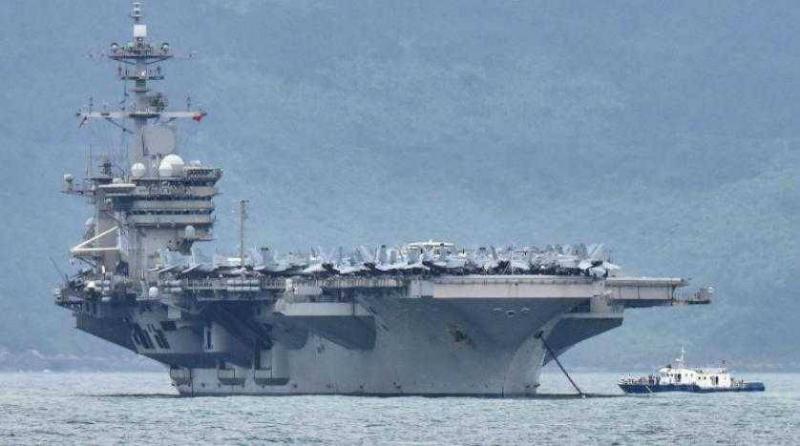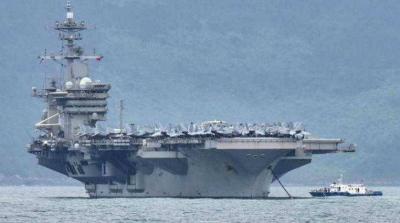Despite expectations that Iran's response to Israel will be significant and could escalate the conflict in the region, some believe that the attack by Iran on Israel on April 13 may not happen at the same pace again. Others view it as possibly paving the way for more Israeli attacks, potentially weakening Iran's capacity to continue its threats in the long run, as noted in "Al-Sharq Al-Awsat." The Washington Institute for Near East Policy suggests that Iran's fear of dragging the United States into combat might be the best means of curbing escalation, especially given Iranian security, intelligence, and military vulnerabilities, which may compel its leaders to reconsider their options and policies in the region.
U.S. officials have revealed little about how they are preparing for the possibility of an attack, but the White House has been clear in affirming its commitment to Israeli security against all threats coming from Iran, including its affiliated militias, specifically naming Hamas, Hezbollah, and the Houthis during a phone call on Thursday between U.S. President Joe Biden and Israeli Prime Minister Benjamin Netanyahu. A brief statement following their call noted that they discussed efforts to support Israel's defense against threats, including ballistic missiles and drones, as well as new U.S. military defensive deployments.
Pentagon Deploys Massive Forces
On Friday evening, Deputy Pentagon Press Secretary Sabrina Singh issued a statement indicating that Defense Secretary Lloyd Austin had ordered the deployment of additional Navy destroyers and cruisers capable of both offensive and defensive missile capabilities, while the Pentagon is also taking steps to enhance ground-based missile defense. She added that an additional squadron of fighter jets would also be deployed to the Middle East to bolster defensive air support. The statement did not specify the ships and units participating but mentioned they would be added to the wide range of capabilities maintained by the U.S. military in the region.
Sabrina Singh further stated that Austin also ordered the deployment of the aircraft carrier USS Abraham Lincoln and its associated escort ships to ensure the carrier remains in the area. An American official mentioned that another aircraft carrier, the USS Theodore Roosevelt, was in the Gulf of Oman on Friday, accompanied by several other warships, after recently leaving the Arabian Gulf. This shift leaves the possibility open for moving this force towards the Mediterranean should it decide to sail westward around Yemen toward the Red Sea.
Repetition of October and April
Sabrina Singh noted that as demonstrated since October and again in April, America's global defense posture is dynamic, and the Defense Department retains the capability to deploy within a short timeframe to address emerging national security threats. She continued, stating that the U.S. remains focused on de-escalating tensions in the region and pushing for a ceasefire as part of a hostage deal and an end to the war in Gaza.
Among the available capabilities to support U.S. forces are fighter jets on the Roosevelt carrier, nearby naval destroyers including USS Daniel Inouye, USS Russell, USS Cole, USS Laboon, and USS Michael Murphy. An American official familiar with the repositioning efforts indicated that the USS John McCain destroyer is also in the region and remains in the Arabian Gulf, while other U.S. warships have moved. Five other U.S. warships are in the eastern Mediterranean, two of which possess offensive and defensive ballistic missile capabilities and could assist Israel if requested, in addition to the amphibious ready group of three ships with over 4,000 Marines, including Marine fighter jets and a Marine battalion alongside other combat troops from Marine Unit 24.
These movements come after Iranian Supreme Leader Ali Khamenei and Hezbollah's Secretary-General Hassan Nasrallah vowed to retaliate for the killing of Hamas Political Bureau Chief Ismail Haniyeh and senior Hezbollah leader Fouad Shukr.
Reconsidering the Fire Ring
The Washington Institute for Near East Policy states that regardless of Israel's desire to re-establish deterrence through these two operations, leaders in Jerusalem and Washington still need to consider how Iran and Hezbollah are likely to respond. The institute adds that Israel may seek to affirm that the U.S. will not be able to deter it; however, these operations were not intended to challenge its closest allies, but rather serve as another means of reimposing deterrence towards Iran and Hezbollah. While such a firm and surprising approach could succeed in the long run and make Iran and Hezbollah think more carefully about the future of the fire ring they imposed around Israel, even if they decide to become more cautious over the long term, they are likely to respond in the near term, significantly increasing the risk of further miscalculations.
The report mentions that in the coming days, the Biden administration will naturally focus on preventing the escalation of the conflict. The current escalation in Iranian rhetoric against the U.S. suggests that Tehran may seek to indirectly deter Israel from responding forcefully by increasing the risk of broader escalation. Based on this perspective, after Israel has clarified its stance, it must now take into account American interests and concerns regarding negotiations for hostage release and a ceasefire in Gaza. The report believes that previous assassination operations earlier this year targeting other Hamas leaders such as Marwan Issa, Mohammed Deif, and Saleh Al-Arouri did not prevent their resumption according to "Al-Sharq Al-Awsat."




